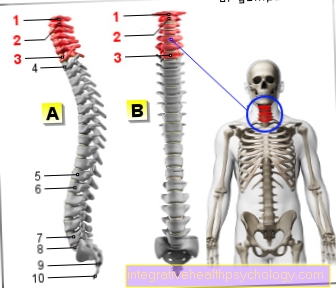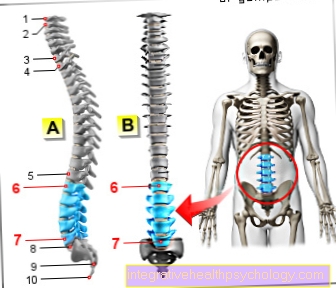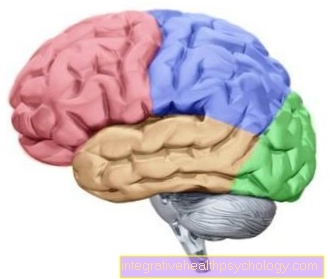sodium
This page deals with the interpretation of blood values that can be obtained from a blood test
Synonyms in a broader sense
- Hypernatremia
- Hypernatremia
- Table salt
- NaCl
English: sodium
function
Sodium is one of the vital electrolytes (salts). Many important metabolic processes are regulated by sodium.
Sodium forms an opposing pair with potassium in our body. While sodium is mainly outside the cells (in the so-called cell space), potassium is found in the cell.
The sodium content of our body is kept constant by various control mechanisms. Sodium is actively pumped out of the cell in exchange for potassium (Na-K-ATP´ase).
Sodium is absorbed through food in the small intestine and excreted through the kidneys.
The total content of sodium in the body is kept very constant within narrow limits.
Sodium is highly osmotic. In simple terms, this means that sodium can attract water. This phenomenon is known from table salt (NaCl), that if it is not stored dry it draws water.
Accordingly, sodium also belongs in our body. Larger intake of table salt leads to the fact that “water” is attracted and as a result thirst arises.
Determination method
The sodium level is determined in the blood plasma or in the blood serum. A blood sample is necessary for this. Other Electrolytes in the blood to be determined.
Standard values
Values that are considered normal in a healthy adult are in the range of.
Normal values of sodium in the blood: 135 to 145 mmol / l
Increase in blood value
An increase in the sodium concentration in serum or plasma greater than 145 mmol / l is referred to medically as hypernatremia.
Symptoms usually only appear at sodium concentrations greater than 150 mmol / l. Sodium levels above 160 mmol / l can lead to life-threatening situations.
In most cases, hypernatremia is caused by a lack of water.
The consequences of hypernatremia are:
- Impaired consciousness
- restlessness
- excitability
- Muscle tremors
- Muscle spasms
- coma
Causes of hypernatremia can be:
- Water loss,
for example from profuse sweating - Diabetes insipidus
In diabetes insipidus, this is a disruption of the water from divorce by a hormone (ADH = anti-diuretic hormone). It can be a disturbance in the production of the hormone in the brain (primary type) or a decreased responsiveness to ADH in the kidneys (secondary type).
More information on this topic can be found at: Diabetes insipidus - Disorder of feeling thirsty
Such disorders can be triggered by benign or malignant brain tumors, but also brain and skull injuries.
Read more about hypernatremia here
Low blood count
A decrease in the sodium concentration in plasma or serum below 135 mmol / l is medically referred to as hyponatremia.
As a rule, sodium concentrations of less than 130 mmol / l cause symptoms. Symptoms are particularly common when the sodium level falls particularly quickly.
With a slow decrease, the body can adapt to the new sodium values.
Causes of hyponatremia can be:
- Vomit
- diarrhea
- Kidney disease / renal insufficiency / nephrotic syndrome (decreased ability of the kidney to excrete sodium)
- Medication
The group of diuretics, which are often used in the therapy of high blood pressure, deserves special mention here. On the one hand, they increase the excretion of water via the kidneys and, on the other hand, they partially increase the active excretion of sodium.
The group of diuretics (water tablets) includes:
Furosemide (Lasix®)
Chlorthalidone
Thiazides
But pain relievers such as ibuprofen or Voltaren can also lower sodium concentrations. - Burns, in which there is a loss of sodium via the and wound fluid
- Inflammation of the pancreas (pancreatitis)
- Nicotine stimulates the hormone ADH mentioned above, which leads to increased water and sodium re-absorption from the urine.
- Cirrhosis of the liver
- Heart failure







.jpg)

.jpg)



















